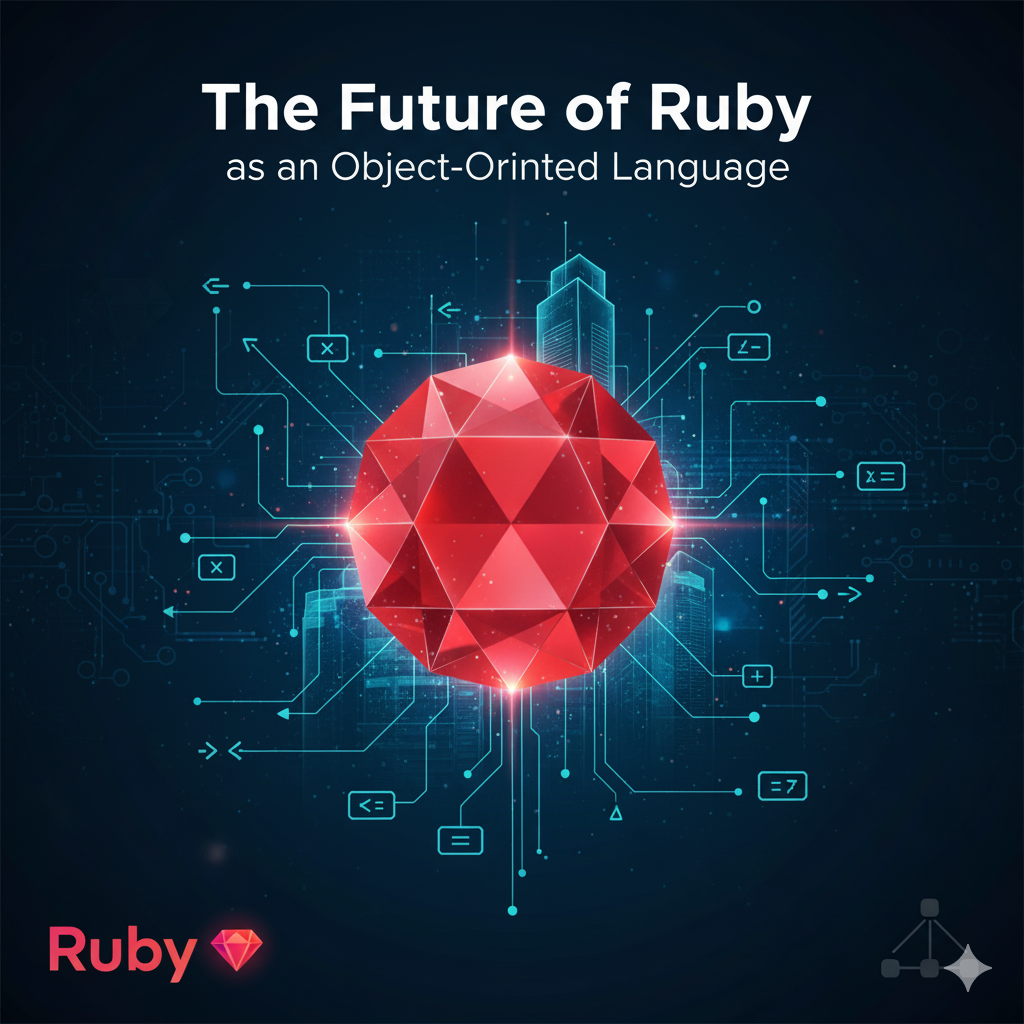The Ruby programming language has stood the test of time, offering simplicity, flexibility, and expressiveness that developers around the world admire. As a Top Ruby on Rails web development company, we’ve witnessed how Ruby’s strong foundation in object-oriented programming (OOP) continues to shape the way modern web applications are built. But what does the future hold for Ruby as an OOP language, especially in a rapidly evolving AI and automation-driven world?
Understanding the Object-Oriented Nature of Ruby
At its core, Ruby was designed as a pure object-oriented language. Everything in Ruby—numbers, strings, and even classes—exists as an object. This approach makes it easier to build scalable, reusable, and maintainable codebases. Unlike procedural or functional languages, Ruby empowers developers to model real-world problems using classes, objects, and methods.
The OOP nature of Ruby enhances collaboration among developers, simplifies debugging, and promotes clean architecture—a major reason why frameworks like Ruby on Rails have become synonymous with fast, reliable web development.
Why Ruby’s OOP Philosophy Still Matters in 2025
In 2025, the global tech landscape is driven by AI integration, automation, and scalability. Amid these advancements, Ruby’s OOP architecture provides a solid foundation for building applications that are both intelligent and adaptive. Developers can encapsulate logic into objects, making it easier to implement machine learning APIs, automate workflows, and create modular web systems.
The OOP design principles—encapsulation, inheritance, and polymorphism—remain critical in building AI-ready web applications. Ruby’s readability and convention-driven approach mean less time configuring, more time innovating. As a result, businesses continue to rely on Ruby on Rails development companies for projects demanding both performance and maintainability.
Ruby and AI: A Modern Symbiosis
While Python dominates AI discussions, Ruby is quietly finding its space through integration libraries and APIs. Tools like TensorFlow.rb and Ruby-DNN are enabling Ruby developers to access deep learning capabilities directly within the language. Thanks to its OOP structure, Ruby can easily model complex systems and interact with AI modules seamlessly.
Moreover, the AI-driven development trend in 2025 values languages that are adaptable and readable—two qualities Ruby naturally possesses. Developers can leverage Ruby’s OOP foundation to streamline AI logic into their Rails-based systems, accelerating innovation while maintaining code clarity.
The Evolution of Ruby’s Object Model
Ruby’s object model has evolved consistently since its early versions. The introduction of Ractors, pattern matching, and just-in-time (JIT) compilation have improved Ruby’s performance and parallelism. Each upgrade strengthens Ruby’s ability to handle large-scale, object-driven applications efficiently.
Modern Ruby versions now focus heavily on performance optimization, security enhancements, and interoperability with AI ecosystems. These advancements ensure that Ruby continues to serve as a dependable OOP language even as newer paradigms, like functional programming and event-driven architecture, gain popularity.
OOP and Ruby on Rails: A Symbiotic Relationship
One cannot discuss Ruby’s OOP influence without mentioning Ruby on Rails, the framework that popularized Ruby globally. Rails thrives on Ruby’s object-oriented design—it uses models, controllers, and views, each encapsulating specific responsibilities. This modularity is the reason why Rails projects can scale efficiently and adapt to new business needs.
In 2025, as companies increasingly move toward microservices and API-first architectures, Ruby on Rails remains relevant due to its object-oriented underpinnings. Developers can reuse code across services, enhance testing efficiency, and integrate modern technologies like GraphQL, Docker, and Kubernetes—all thanks to Ruby’s OOP core.
Why OOP in Ruby Still Wins for Startups and Enterprises
For startups, Ruby’s OOP-based simplicity translates into faster MVP development and cost efficiency. Teams can rapidly prototype ideas using reusable objects and refine them into production-grade applications. For enterprises, the scalability and maintainability of OOP systems make Ruby ideal for long-term projects.
From eCommerce to SaaS, and fintech to healthcare, businesses continue to depend on Ruby-powered frameworks for their flexibility. The object-oriented structure of Ruby allows teams to integrate APIs, AI assistants, and automation modules without disrupting core functionality.
Challenges and the Road Ahead
While Ruby faces competition from languages like Python, Go, and TypeScript, its commitment to developer happiness and clean OOP structure sets it apart. The Ruby community continues to evolve with trends like AI-powered testing, predictive debugging, and modular Rails components.
The future may see Ruby becoming more AI-compatible, supporting advanced parallel computing models, and improving interoperability with data science frameworks. These updates will further solidify Ruby’s role as a modern OOP language designed for innovation.
Conclusion
The future of Ruby as an object-oriented language remains bright, driven by its adaptability, active community, and robust ecosystem. Its clean OOP design continues to empower developers to build sustainable, AI-ready, and high-performance applications. As businesses embrace digital transformation, partnering with a Trusted software development company can unlock the full potential of Ruby’s OOP excellence.
FAQs
1. Is Ruby a fully object-oriented language?
Yes. In Ruby, everything—from data types to classes—is treated as an object, making it a pure object-oriented language.
2. Why is Ruby popular for web development?
Ruby’s simplicity, readable syntax, and strong OOP principles make it ideal for building scalable web applications using Ruby on Rails.
3. How does OOP benefit Ruby developers?
OOP in Ruby promotes reusability, maintainability, and clean architecture, which simplifies large-scale application development.
4. Is Ruby relevant in 2025?
Absolutely. With updates improving performance and AI integration, Ruby remains a strong choice for web and AI-backed applications.
5. What industries use Ruby today?
Ruby powers platforms in eCommerce, SaaS, fintech, healthcare, and automation—thanks to its flexibility and OOP-driven design.




